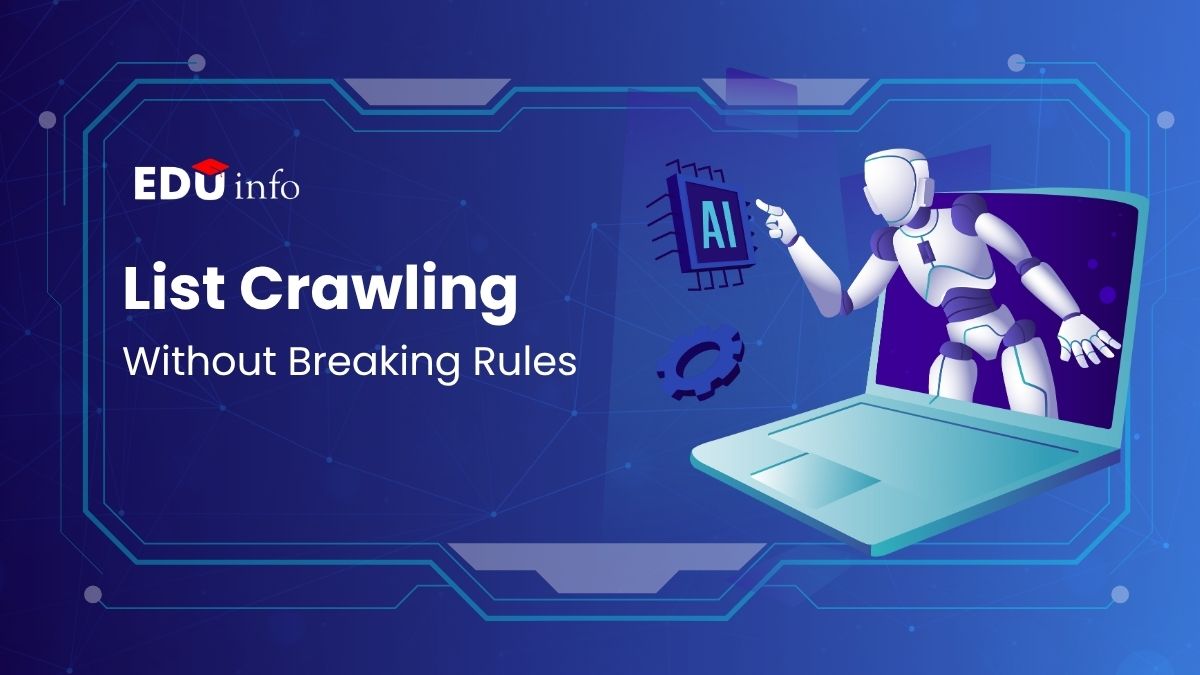Simply put, information is power. Marketers, researchers, and businesses often need access to large volumes of data to generate leads, monitor market trends, and make informed decisions on the basis of insights. That’s where list crawling plays an important role, it help businesses to collect and manage valuable data more effectively.
By using a list crawler or specialized tools, businesses can gather a large volume of structured data such as customer insights, email lists, or product details.
List crawling is a highly efficient approach for gathering data with some ethical and legal challenges. If not run carefully, a list crawl could lead to lawsuits, penalties, or even reputational damage.
That is why following best practices are important, not only to follow rules but also to maintain business growth.
What is List Crawling?
List crawling is an automated process of collecting structured data from websites and online resources.
Unlike subset of web scraping, which might collect un-structured content from multiple web pages, a list crawler is used for more focused data collection. This arises an important question: What is list crawler?
A list crawler is specially designed to extract specific data lists like product catalogs, contact information, or business directories.
For example:
- A list crawler is used by an individual to collect candidate profiles from job boards.
- A retailer performs a list crawl to see competitors’ product prices.
- Marketers may collect potential leads from different companies directories.
The main difference between ethical and unethical list crawling lies from where and how you collect data.
Legal and Ethical Concerns in List Crawling
Is list crawler legit? when a business starts any list crawl, they must understand the risks involved. Main concerns include:
- Data Privacy Regulations: Laws such as CCPA in California and GDPR in Europe protect user data. If anyone violates their law may face a heavy fine with punished.
- Website Terms of Services: Many websites mentioned clearly that any unauthorized crawling is prohibited. Ignoreing these rules can lead to legal action or blocked IPS.
- Intellectual Property Issues: Extracting copyrighted content without authority may break intellectual property rights.
Using a lister crawler without considering legal boundaries can do more harm than good.
Best Practices for Ethical List Crawling
Following best practices guidelines makes sure that your web crawling activities remain trustworthy and compliant.
1. Always Review Website Terms and Conditions
Always check the term of service of a website before running a list crawler. Some websites allow crawling with specific limitations, while others block it entirely. If you respect a website’s policy then you prevent unnecessary conflicts.
2. Use APIs When Available
Use APIs instead of starting a list crawler whenever possible. APIs are generated for sharing data, making them reliable and legal. APIs provide more structured data as compared to raw crawling.
3. Focus on Publicly Available Data Only
In ethical list crawling, you can only target publicly accessible websites data. For example, product listing, public contact details, or business directories are legal to fetch. Avoid getting sensitive or private data, which could violate privacy laws.
4. Limit Request Frequency to Avoid Server Overload
Ensure to run a list crawler in a limited request frequency, otherwise you can harm websites or crash their server. Always set rate limits for smooth crawling.
5. Anonymize and Secure Data Collection
Secure collected data to avoid leaks or misuse. Moreover, anonymizing information where possible helps businesses remain compliant with data protection laws.
Tools and Techniques for Safe List Crawling
Advanced tools perform list crawl responsibly. List crawlers platforms have features like:
- Built-in rate limiting to overcome server overload problem.
- Filter options to gather only relevant data.
- Protected storage methods to store data lists.
Small businesses can save time and collect more data by choosing the right list crawling tool.
The Role of Market Intelligence Tools in Ethical Crawling
Instead of using traditional crawlers, market intelligence tools provide the best and safer way.
These marketing tools gather data from legal sources and structure them in usable format for analysis.
For small businesses, they can track industry trends, generate leads, and monitor competitors in a safer way without risking legal trouble.
Common Mistakes to Avoid in List Crawling
When someone starts list crawling for the first time, they often make somes mistakes. To avoid these mistakes, go through the following points:
- Ignore Legal Guidelines: Checking website’s privacy laws first before starting crawling.
- Collecting Irrelevant Data: Collected data is useless if it is irrelevant to your business.
- Overload Server: Crawling aggressively may get you IP banned or crash the server.
- Not Cleaning Data: A raw list crawl often contains incomplete or duplicate data that needs refining.
Future of List Crawling and Data Compliance
List crawling will face more strict rules in future as business depends more on digital data. Now-a-days, rules become stricter and websites are getting better at spotting crawlers.
Alongside this, AI tools will make data collection much easier and faster, focusing only on ethical and useful resources to collect relevant data.
Businesses can adopt responsible crawling methods now to collect business insights that help them in long-term growth without facing any legal challenges.
Conclusion
List crawling is a powerful method for small businesses, researchers, and marketers to collect targeted data. A well-managed list crawl provides leads, insights, and competitive advantages.
Moreover, the difference between risk and success lies in how it is done. If a business operates list crawlers using legal methods, it can enjoy benefits without facing any risks.
Ethical list crawling is not just about following rules, it is about building long-term growth through respect, trust, and responsibility.


